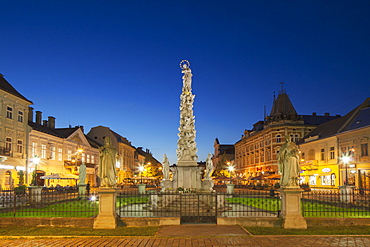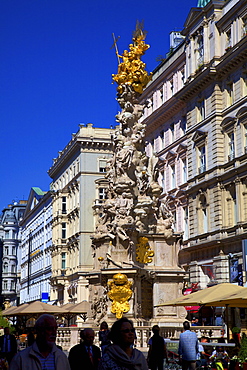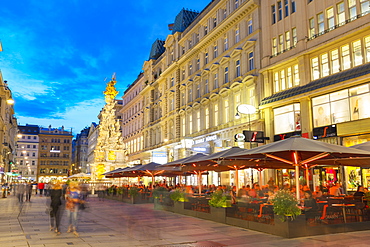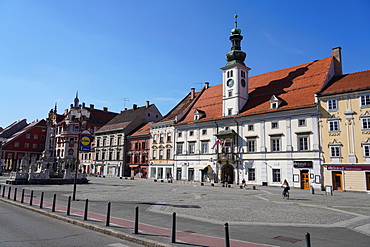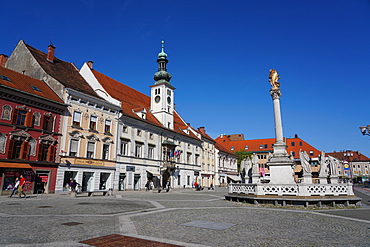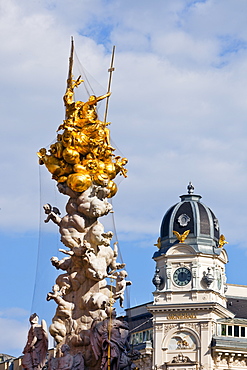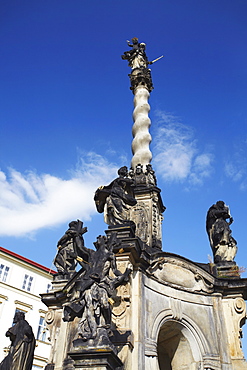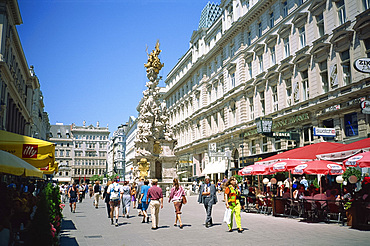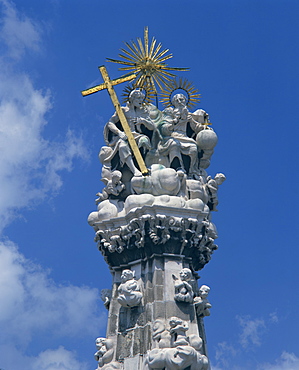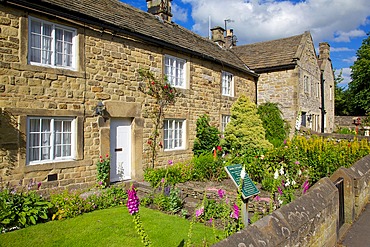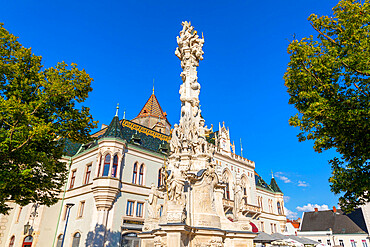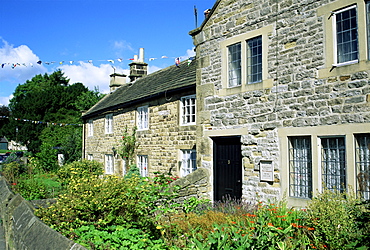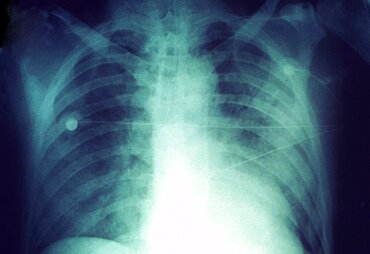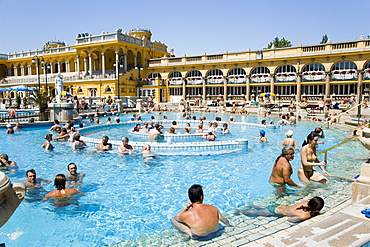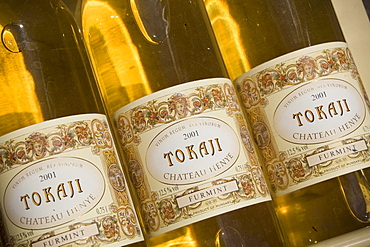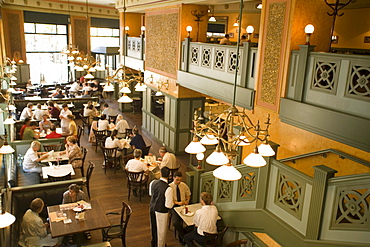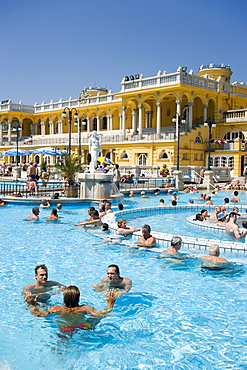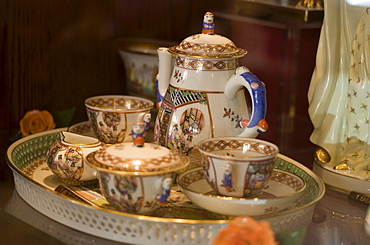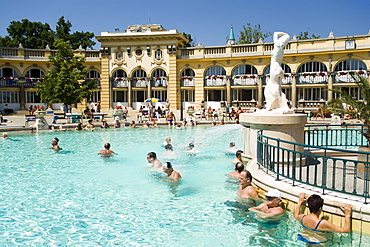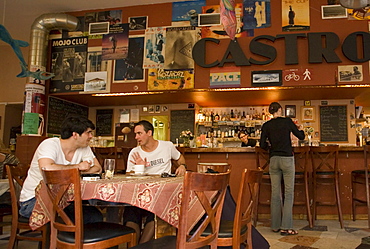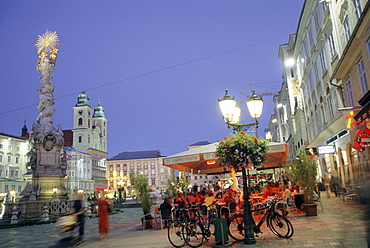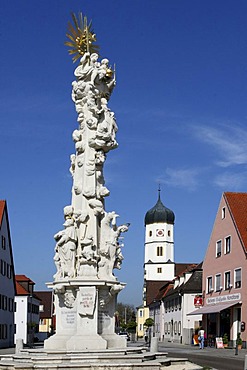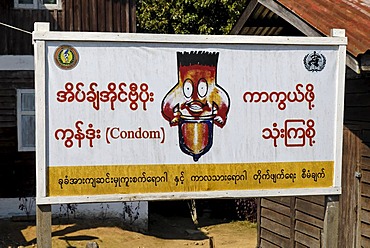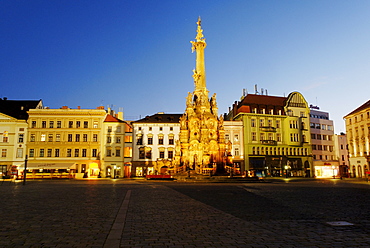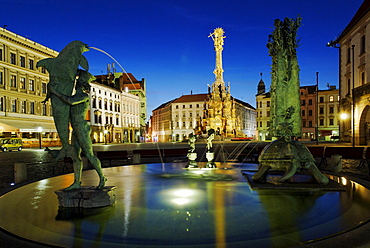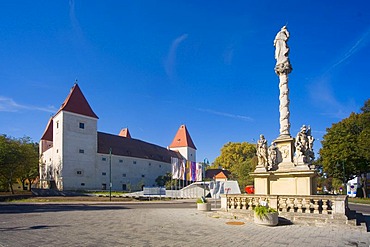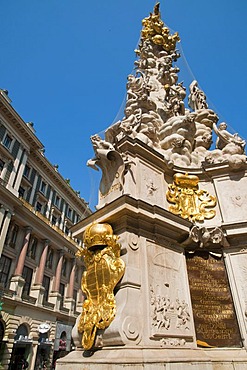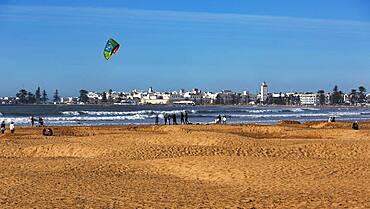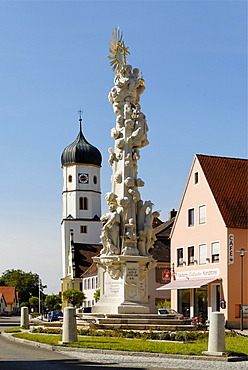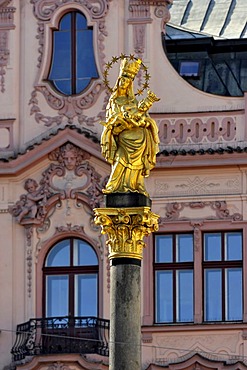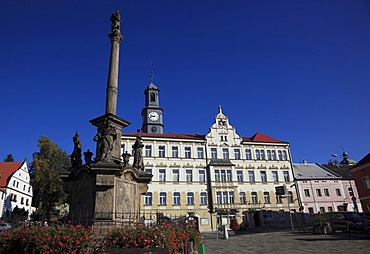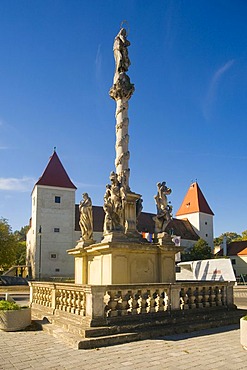Results
30 results found
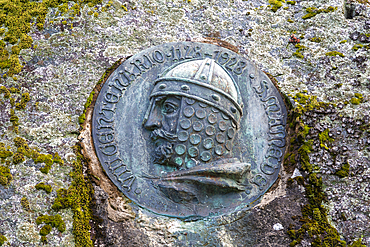
Plague on castle wall of Dom Afonso Henriques 1109-1185 first king of Portugal, Guimaraes, northern Portugal, Europe
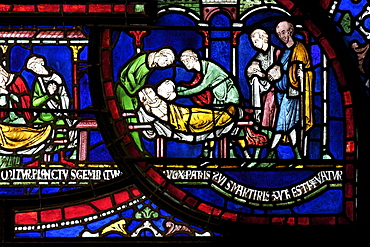
Medieval stained glass depicting the Plague in the House of Jordan Fitz-Eisulf, Becket Miracle Window 6, Trinity Chapel Ambulatory, Canterbury Cathedral, UNESCO World Heritage Site, Canterbury, Kent, England, United Kingdom, Europe
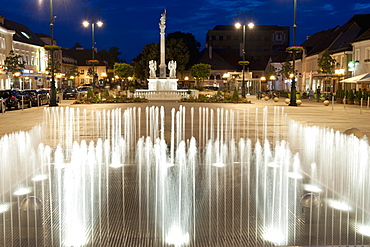
Evening scene around Baroque Plague Column, Hauptplatz Square, Tulln, Niederosterreich, Austria, Europe
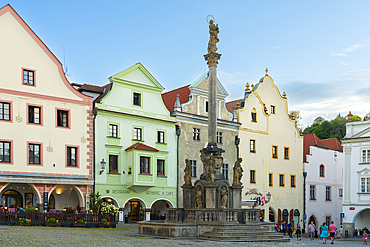
Fountain and Plague Column at Namesti Svornosti square in historic center of Cesky Krumlov, UNESCO World Heritage Site, South Bohemian Region, Czech Republic (Czechia), Europe
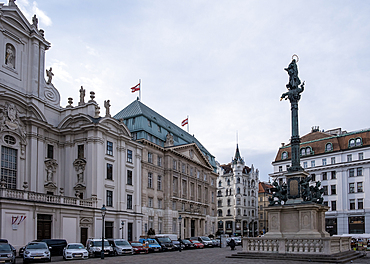
Vienna, Austria ��� View of the Mariensv�ule, the 17th-century plague column standing before the Kirche am Hof, its gilded Virgin Mary statue contrasting with the church's stark Gothic facade on Am Hof square.

Plague Cottages, Village of Eyam, Peak District National Park, Derbyshire, England, United Kingdom, Europe
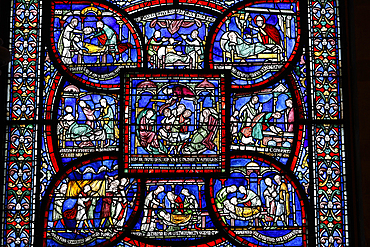
Stained glass detail of the Plague in the House of Jordan Fitz-Eisulf, Becket miracle window, Trinity Chapel ambulatory, Canterbury Cathedral, UNESCO World Heritage Site, Canterbury, Kent, England, United Kingdom, Europe
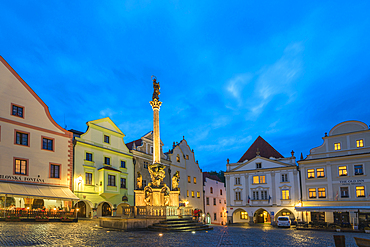
Fountain and Plague Column with traditional houses with gables in background at twilight, Namesti Svornosti Square in historical center, UNESCO World Heritage Site, Cesky Krumlov, Czech Republic (Czechia), Europe

Fountain and Plague Column and traditional houses with gables in background at twilight, Namesti Svornosti Square in historical center, UNESCO, Cesky Krumlov, Czech Republic (Czechia), Europe

Fountain and Plague Column with traditional houses with gables in background, Namesti Svornosti Square in historical center, UNESCO World Heritage Site, Cesky Krumlov, Czech Republic (Czechia), Europe
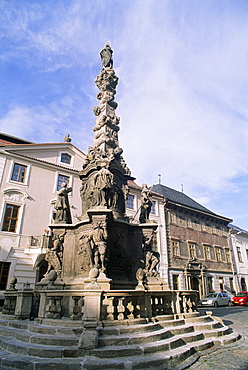
Baroque plague column dating from 1715, built as symbol of Roman Catholic domination by Austrian Hapsburgs, Kutna Hora, Stredocesko, Czech Republic, Europe
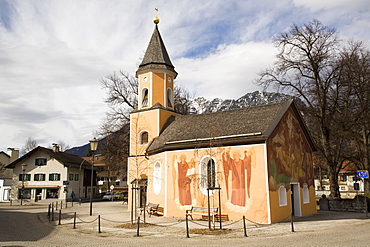
The former Plague Chapel (Pestkapelle), now a war memorial, in the Partenkirchen side of Garmisch-Partenkirchen, Bavaria, Germany, Europe
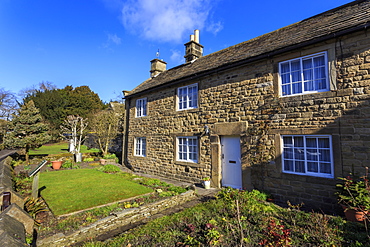
Rose Cottage, Plague Cottages, Plague Village, Eyam, Peak District National Park, Derbyshire, England, United Kingdom, Europe
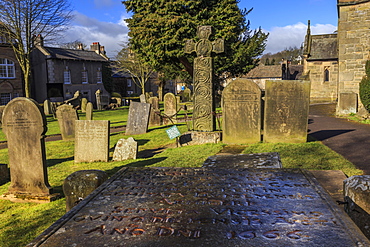
Saxon Cross and Plague victim's table tomb (Catherine Mompesson), Eyam Church, Plague Village, Eyam, Derbyshire, England, United Kingdom, Europe

Baroque Plague Column and 19th century spa buildings in spa town of Karlovy Vary, Karlovarsky Region, West Bohemia, Czech Republic, Europe
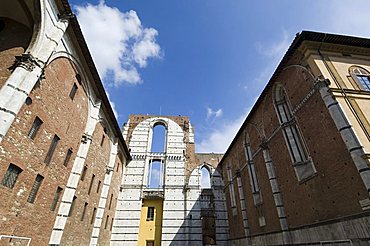
The unfinished nave wall of the Duomo (Cathedral) which was abandoned after the plague, Siena, Tuscany, Italy, Europe
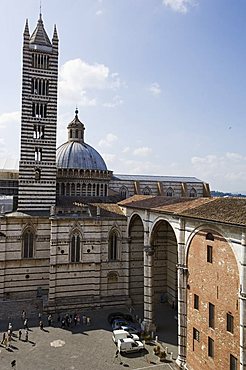
View of the unfinished nave wall of the Duomo (Cathedral) which was abandoned after the plague, Siena, UNESCO World Heritage Site, Tuscany, Italy, Europe
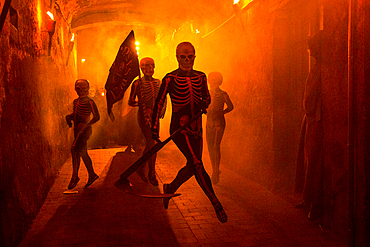
Verges, a small town in the Northeast of Catalonia (Spain), during Easter celebrates the Procession of Verges with skeletons dancing on the sound of a drum, Roman soldiers, known as the 'Manages', and a representation of the life and crucifixion of Jesus Christ. The Procession features the Dance of Death, a tradition from the Middle Age associated with epidemics and plagues and the only one remaining in Spain Ten skeletons dance to the beat of a drum to remember that no one is exempt of death. The backdrop of the medieval walls and towers of Verges is key to this macabre staging.
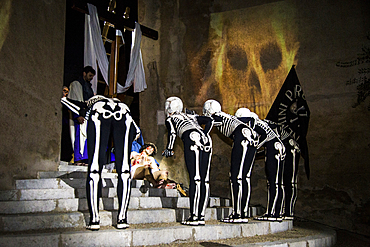
Verges, a small town in the Northeast of Catalonia (Spain), during Easter celebrates the Procession of Verges with skeletons dancing on the sound of a drum, Roman soldiers, known as the 'Manages', and a representation of the life and crucifixion of Jesus Christ. The Procession features the Dance of Death, a tradition from the Middle Age associated with epidemics and plagues and the only one remaining in Spain Ten skeletons dance to the beat of a drum to remember that no one is exempt of death. The backdrop of the medieval walls and towers of Verges is key to this macabre staging.
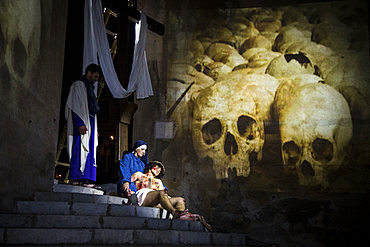
Verges, a small town in the Northeast of Catalonia (Spain), during Easter celebrates the Procession of Verges with skeletons dancing on the sound of a drum, Roman soldiers, known as the 'Manages', and a representation of the life and crucifixion of Jesus Christ. The Procession features the Dance of Death, a tradition from the Middle Age associated with epidemics and plagues and the only one remaining in Spain Ten skeletons dance to the beat of a drum to remember that no one is exempt of death. The backdrop of the medieval walls and towers of Verges is key to this macabre staging.
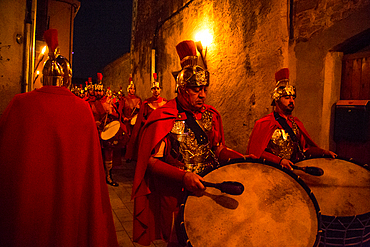
Verges, a small town in the Northeast of Catalonia (Spain), during Easter celebrates the Procession of Verges with skeletons dancing on the sound of a drum, Roman soldiers, known as the 'Manages', and a representation of the life and crucifixion of Jesus Christ. The Procession features the Dance of Death, a tradition from the Middle Age associated with epidemics and plagues and the only one remaining in Spain Ten skeletons dance to the beat of a drum to remember that no one is exempt of death. The backdrop of the medieval walls and towers of Verges is key to this macabre staging.
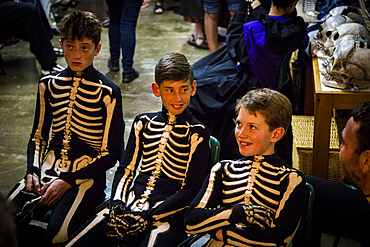
Verges, a small town in the Northeast of Catalonia (Spain), during Easter celebrates the Procession of Verges with skeletons dancing on the sound of a drum, Roman soldiers, known as the 'Manages', and a representation of the life and crucifixion of Jesus Christ. The Procession features the Dance of Death, a tradition from the Middle Age associated with epidemics and plagues and the only one remaining in Spain Ten skeletons dance to the beat of a drum to remember that no one is exempt of death. The backdrop of the medieval walls and towers of Verges is key to this macabre staging.
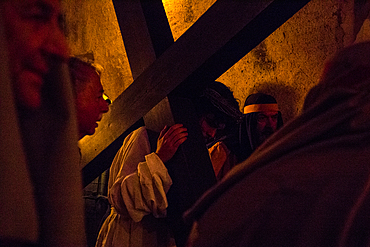
Verges, a small town in the Northeast of Catalonia (Spain), during Easter celebrates the Procession of Verges with skeletons dancing on the sound of a drum, Roman soldiers, known as the 'Manages', and a representation of the life and crucifixion of Jesus Christ. The Procession features the Dance of Death, a tradition from the Middle Age associated with epidemics and plagues and the only one remaining in Spain Ten skeletons dance to the beat of a drum to remember that no one is exempt of death. The backdrop of the medieval walls and towers of Verges is key to this macabre staging.
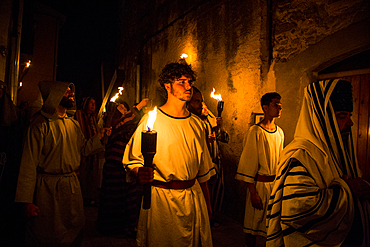
Verges, a small town in the Northeast of Catalonia (Spain), during Easter celebrates the Procession of Verges with skeletons dancing on the sound of a drum, Roman soldiers, known as the 'Manages', and a representation of the life and crucifixion of Jesus Christ. The Procession features the Dance of Death, a tradition from the Middle Age associated with epidemics and plagues and the only one remaining in Spain Ten skeletons dance to the beat of a drum to remember that no one is exempt of death. The backdrop of the medieval walls and towers of Verges is key to this macabre staging.
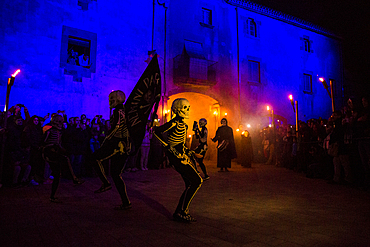
Verges, a small town in the Northeast of Catalonia (Spain), during Easter celebrates the Procession of Verges with skeletons dancing on the sound of a drum, Roman soldiers, known as the 'Manages', and a representation of the life and crucifixion of Jesus Christ. The Procession features the Dance of Death, a tradition from the Middle Age associated with epidemics and plagues and the only one remaining in Spain Ten skeletons dance to the beat of a drum to remember that no one is exempt of death. The backdrop of the medieval walls and towers of Verges is key to this macabre staging.
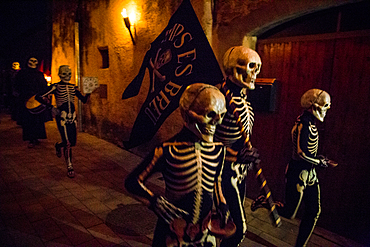
Verges, a small town in the Northeast of Catalonia (Spain), during Easter celebrates the Procession of Verges with skeletons dancing on the sound of a drum, Roman soldiers, known as the 'Manages', and a representation of the life and crucifixion of Jesus Christ. The Procession features the Dance of Death, a tradition from the Middle Age associated with epidemics and plagues and the only one remaining in Spain Ten skeletons dance to the beat of a drum to remember that no one is exempt of death. The backdrop of the medieval walls and towers of Verges is key to this macabre staging.
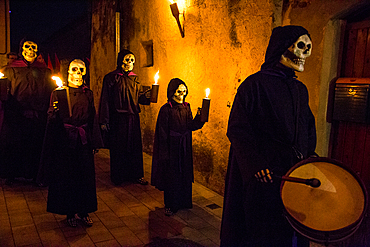
Verges, a small town in the Northeast of Catalonia (Spain), during Easter celebrates the Procession of Verges with skeletons dancing on the sound of a drum, Roman soldiers, known as the 'Manages', and a representation of the life and crucifixion of Jesus Christ. The Procession features the Dance of Death, a tradition from the Middle Age associated with epidemics and plagues and the only one remaining in Spain Ten skeletons dance to the beat of a drum to remember that no one is exempt of death. The backdrop of the medieval walls and towers of Verges is key to this macabre staging.
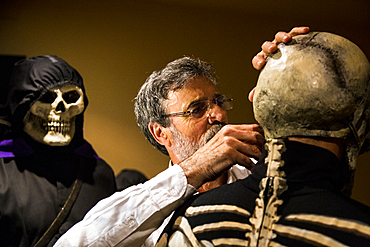
Verges, a small town in the Northeast of Catalonia (Spain), during Easter celebrates the Procession of Verges with skeletons dancing on the sound of a drum, Roman soldiers, known as the 'Manages', and a representation of the life and crucifixion of Jesus Christ. The Procession features the Dance of Death, a tradition from the Middle Age associated with epidemics and plagues and the only one remaining in Spain Ten skeletons dance to the beat of a drum to remember that no one is exempt of death. The backdrop of the medieval walls and towers of Verges is key to this macabre staging.
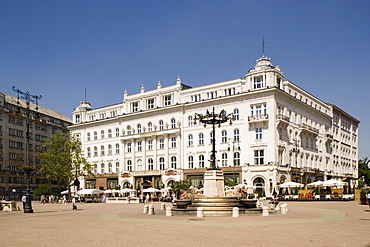
Cafe Gerbeaud, View to Cafe Gerbeaud, which is specialized in hungarian cakes, Pest, Budapest, Hungary

Hungarian National Museum, View to the main entrance of the Hungarian National Museum, Pest, Budapest, Hungary
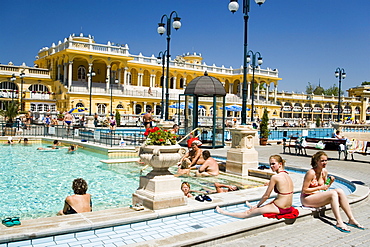
People at Szechenyi-baths, People relaxing at open-air areo of the Szechenyi-baths, Pest, Budapest, Hungary
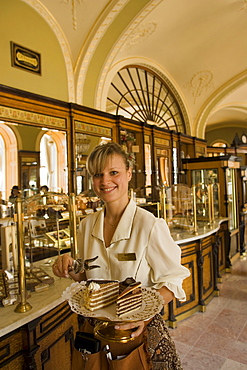
Waitress serving cake in Cafe Gerbeaud, Waitress serving fancy cake in Cafe Gerbeaud, which is specialized in hungarian cakes, Pest, Budapest, Hungary
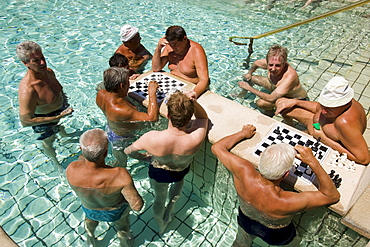
Men playing chess in a thermal bath, Men playing chess in a thermal bath of the Szechenyi-baths, Pest, Budapest, Hungary
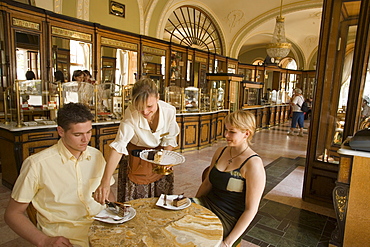
Waitress serving cake in Cafe Gerbeaud, Waitress serving fancy cake in Cafe Gerbeaud, which is specialized in hungarian cakes, Pest, Budapest, Hungary
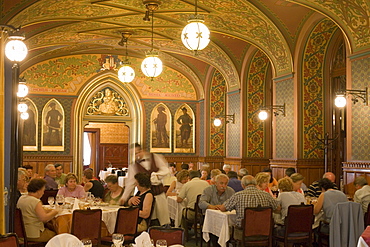
People in the Karpatia Restaurant, Waiter attending on guests in the Karpatia Restaurant, Pest, Budapest, Hungary
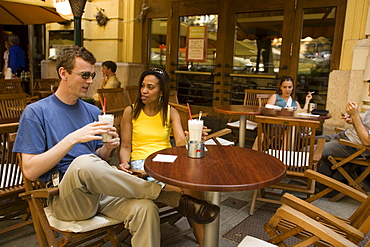
Couple drinking latte macchiato in an open-air cafe, Couple sitting in an open-air Cafe at Liszt Square and drinking latte macchiato, Pest, Budapest, Hungary
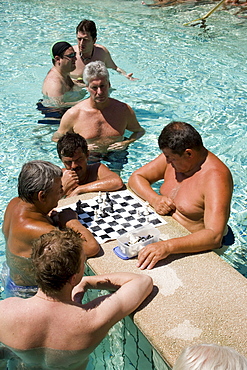
Men playing chess in a thermal bath, Men playing chess in a thermal bath of the Szechenyi-baths, Pest, Budapest, Hungary
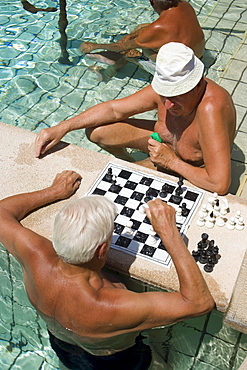
Men playing chess in a thermal bath, Men playing chess in a thermal bath of the Szechenyi-baths, Pest, Budapest, Hungary
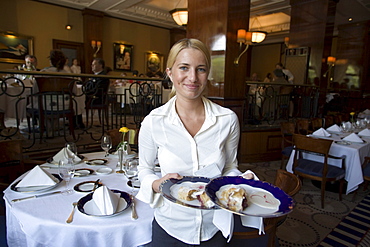
Waitress serving dessert, Waitress serving dessert in the restaurant Gundel, Pest, Budapest, Hungary

Hungarian State Opera House, View to the Hungarian State Opera at Andrassy Street, Pest, Budapest, Hungary
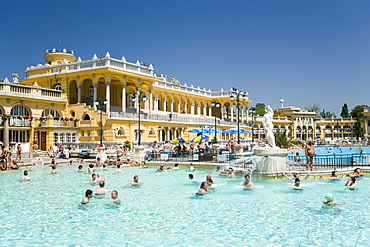
People in open-air swimming pool, People swimming in open-air pool of Szechenyi-Baths, Pest, Budapest, Hungary
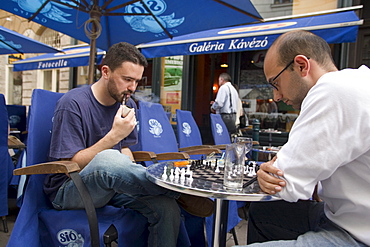
Two men playing chess, Two men playing chess in an open-air restaurant at Raday Street, Pest, Budapest, Hungary
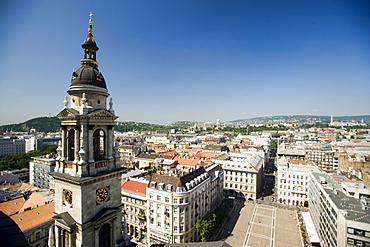
View from St. Stephen's Basilica, Impressive view from the St. Stephen's Basilica over Pest, Budapest, Hungary
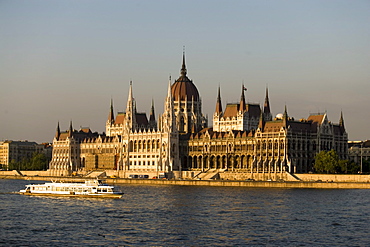
Parliament and Danube river with boat, A leisure boat on the Danube river passing the Parliament, Pest, Budapest, Hungary
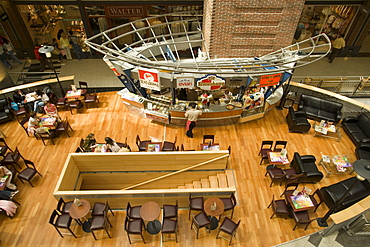
Cafe inside the West End City Center, High angle view to a cafe inside the West End City Center, Pest, Budapest, Hungary
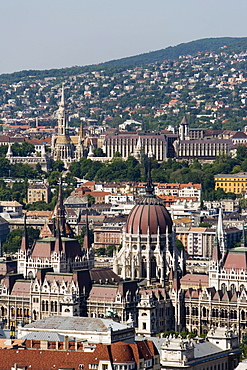
View to the Parliament, View from Budapest Eye Sightseeing Balloon to the Parliament, Pest, Budapest, Hungary
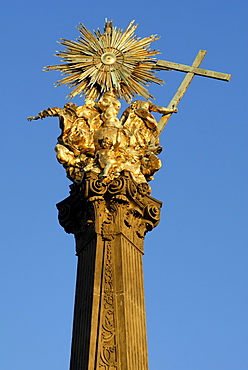
Golden Crown of the Plague column, UNESCO World Heritage Site, Olomouc, Northern Moravia, Czech Republic, Europe

Holy Trinity Pillar with figurines of saints, 14 m high, detail, baroque plague column in remembrance of the epidemic of the bubonic plague that occurred in 1691, St. Mathew's Church, Budapest, Hungary, Europe
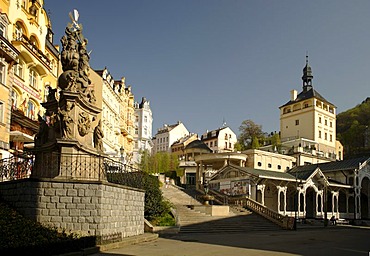
Castle road with plague column, castle tower and market colonnade, Karlovy Vary, West Bohemia, Czech Republic, Europe

Holy Trinity Column, Baroque plague column with figures of saints, 14 m high, commemorating the plague epidemic in 1691, Matthias Church, Budapest, Hungary, Europe
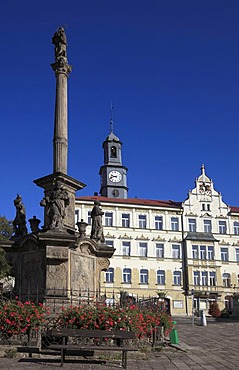
Plague column and market square of Benesov nad Plousnici, North Bohemia, Bohemia, Czech Republic, Europe
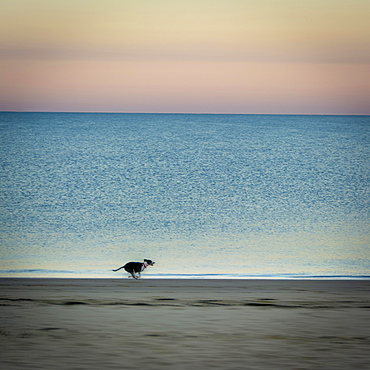
Dog on beach at sunrise, Chatelaillon-Plage near La Rochelle, Charente-Maritime department, Nouvelle-Aquitaine, France, Europe
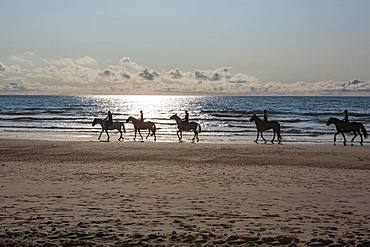
Group of riders on horses backlit on the beach, Gurp Plage, Grayan-et-l`Hopital, Aquitaine, Gironde, France, Europe
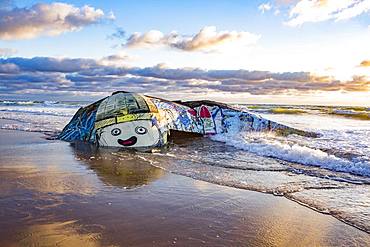
Colorfully painted bunker from the 2nd World War at high tide in the sea, Plage Gurp, Grayan-et-l`Hopital, Aquitaine, Gironde, France, Europe
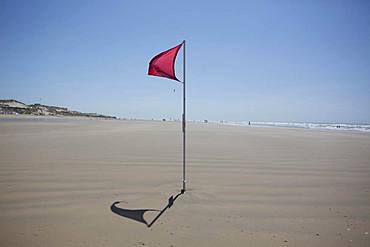
Red flag on the beach warn against dangerous drifts, Gurp Plage, Grayan-et-l`Hopital, Aquitaine, Gironde, France, Europe
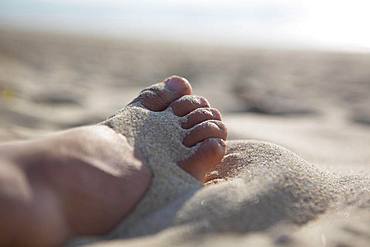
Foot in the sand on the sandy beach, Gurp Plage, Grayan-et-l`Hopital, Aquitaine, Gironde, France, Europe

Saint Rochus of Montpelier, patron saint against plague, holding model of the church St. Sebald, statue under canopy made of copper with verdigris at the corner of the house Egidienplatz and Theresienplatz, Nuremberg, Middle Franconia, Franconia, Bavaria, Germany, Europe
